Recently we saw the release of a facsimile edition of Green Lantern/Green Arrow #85 by Denny O’Neil and Neal Adams. Originally published with a cover date of August 1971, this issue revealed Green Arrow’s sidekick, Speedy (Roy Harper) as a heroin addict. It is regarded as a high watermark for comics of that era. It dealt with a contemporary issue that was treated seriously. It also added something drastic to Roy Harper’s character. It’s an element that would either be forgotten, or be folded into Roy’s character for the long haul.
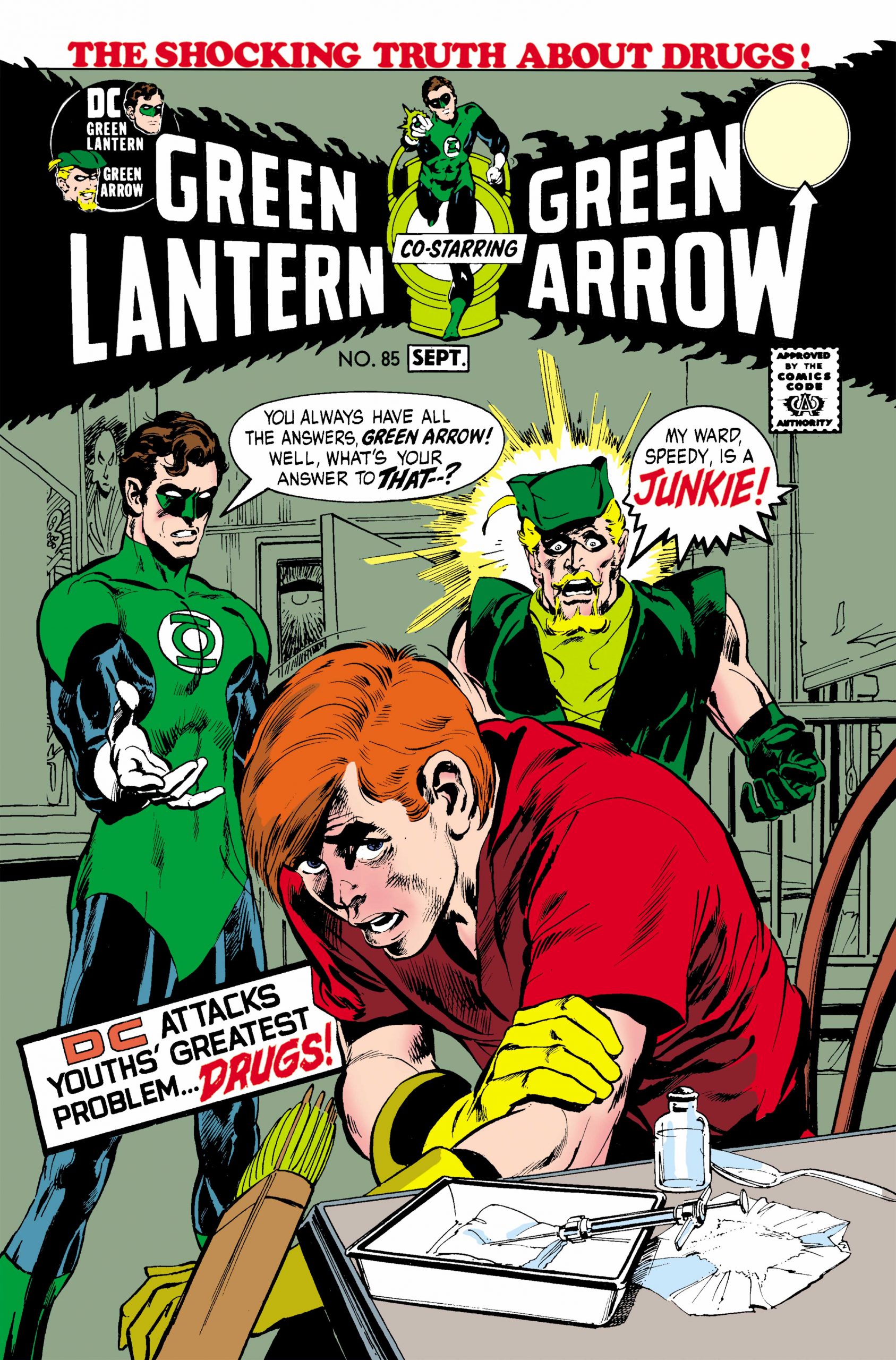
Roy Harper: Addict
The late ‘60’s and early ‘70’s were a time for DC Comics when changes were introduced that would have a long lasting impact. Just a couple years earlier in Batman #217 (December, 1969), Dick Grayson graduated High School and entered Hudson University. This was a real change for the status quo in the Batman line of comics and would certainly be an integral change for Dick eventually adopting the Nightwing identity in Tales of the Teen Titans #44 (July, 1984.) Dick has never returned to his previous identity as “Robin,” instead the role has been filled by subsequent sidekicks, Jason Todd, Tim Drake and others.
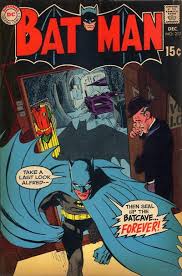
DC Comics was not afraid to show real life changes affecting their characters. In this era, DC’s heroes who inhabited Earth-Two, continued to age and experience “real life” events. Batman’s marriage to Catwoman yielded fan-favorite Helena Wayne, better known as the Huntress. Concurrently, this idea of real life events bled over to Earth-One, where the main versions of the DC heroes lived. The Flash’s wife Iris West was murdered, Dick Grayson was shown to age, and Roy Harper had a real life concern introduced in Green Lantern/Green Arrow #85: drug addiction.

When Denny O’Neil and Neal Adams launched their historic run on Green Lantern/ Green Arrow with #76 (April, 1970), they began by looking at racial injustice. So, the fact that they would tackle another socio/political issue of the day is no surprise. The biggest shock is that Speedy, a character originally introduced along side Green Arrow in More Fun Comics #73 (November, 1941) would be the one to fall under the influence of drugs.
As significant a move as this was in 1971, this aspect has been a mainstay of Roy Harper’s character. Continuity for Earth-One didn’t change after the Multiverse altering Crisis on Infinite Earths in terms of Roy’s character. And when major changes came to affect the DC Universe in the most drastic way since the “Crisis,” “The “New 52” kept this aspect of Roy’s character. Even the more recent “Rebirth” branding kept Roy’s addiction as part of his history.
It is understandable that up until the “Crisis on Infinite Earths” there wouldn’t be a lot of continuity manipulation. However, this was DC’s chance to reset anything they wished. “The New 52” also provided the opportunity for character and continuity tweaks. And they chose not to change this aspect. Keeping it is therefore significant. What is it about this element that has become so ingrained into Roy’s character?
Green Lantern/Green Arrow #85 – Today
When reading Green Lantern/Green Arrow #85 today, it has moments of feeling fully formed and progressive, but at other times it still echoes the era in which it was produced. Green Arrow over the years has become known as a liberal icon in the comic world. However, despite his portrayal at the beginning of the O’Neil/Adams run, he comes across as “The Man” in this issue.

O’Neil not only wanted to write socially conscious tales, but also ones that addressed the generation gap. Green Lantern/Green Arrow #85 gets to a bit of that as Speedy recounts that he turned to heroin as a substitute for his friendship with Oliver Queen (Green Arrow). In the issue, Ollie has a really hard time relating to the kids who have turned to drugs. It makes the revelation about Speedy that much harder for him to take. As the character who challenged Green Lantern (Hal Jordan) about his awareness of social issues at the beginning of the O’Neil/Adams run, it’s a clever turnabout to show Ollie as the one who seems a bit out of touch.
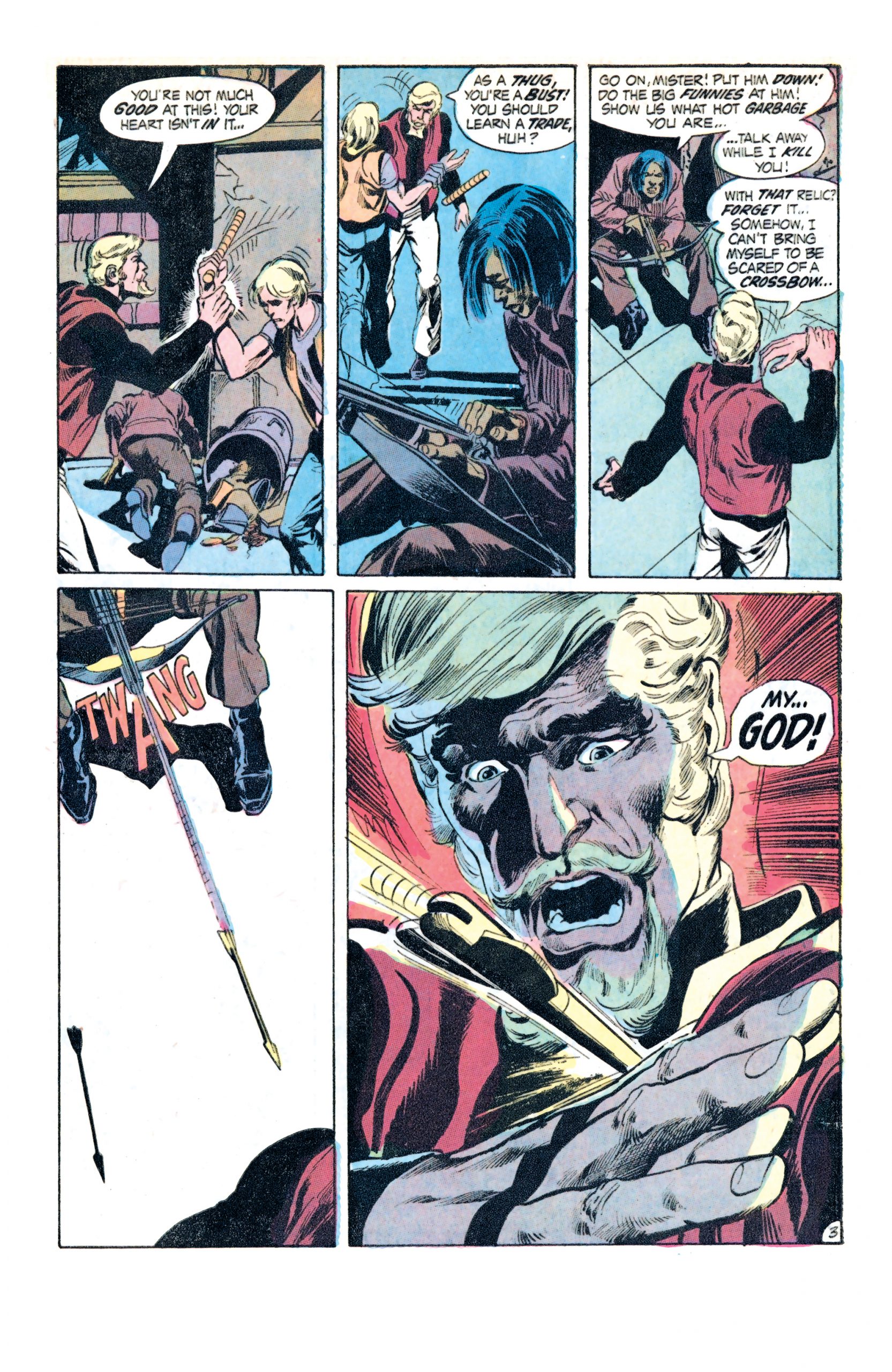
As Oliver admits that he’s been wrapped up with his romance with Black Canary, he also confesses that he has distanced himself from Roy. With this, Oliver becomes a more fully developed character. He’s not simply the “liberal activist.” Instead, he’s a man with varied facets to his character. Despite the relevance of dealing with the issue of drugs, this is probably the most significant aspect of the issue in terms of the maturation of comic books. O’Neil and Adams made a true effort in presenting Oliver as a complex individual that was a reflection of the complexity of people in the real world. It’s notable that Hal Jordan comes off as more understanding and softer on the kids which in turn reflects the complexity of his character and the lessons learned in the first part of the “Hard Traveling Heroes” series of stories.

Despite the insight the story provides into these characters, one still has to wonder why Roy’s addiction is still a part of the character to this day. It would seem that over time it has become a hallmark of the character. It’s an iconic element that infuses Roy Harper with a real world quality and giant obstacle that he has overcome. In some ways, it is comparable with Barbara Gordon’s crippling at the hands of The Joker in The Killing Joke. Barbara overcame it in her transition to Oracle, and it is in much the same way a victory over a real life obstacle. This may be the critical element to making it an iconic element in Roy’s character.
Perspective of History
Looking back, the O’Neil/Adams run on Green Lantern/Green Arrow is seen as a pinnacle of the art form. There’s no denying that Adams was, and still is a one-of-a-kind illustrator and phenomenal storyteller. Paired with O’Neil’s prescient story ideas, the two made a brilliant combination on this title as well as their collaboration on Batman.
It’s probably a non-issue, no one at the time would’ve complained about Adam’s art. However, it is believable that there could’ve been some readers that would’ve taken umbrage with the introduction of real world problems into comic books. Even though the age of the average comic book reader was rising, there were still kids who read comics and they might’ve had parents who weren’t happy about the contemporary themes. Perhaps, some younger kids found parts of the books unappealing because of it. One thing is for sure, it is viewed singularly in the history of comics. It is one of those moments that pushed the maturity of the form forward, even if it wasn’t the first time such a theme had been depicted.
If there’s one real knock against this issue it could be argued that it’s pigeonholed Roy Harper as the perpetual “recovering addict.” On one hand it’s a character development that’s not been retconned away, but it’s also not allowed Roy to grow beyond it either. For comparison, Wally West, Roy’s friend and teammate on the Teen Titans was allowed to overcome his feelings of inadequacy. After feeling like he was living in the shadow of his mentor Flash, Barry Allen, Wally went on to become the main Flash in his own right, marry and have children. It wasn’t until the recent Heroes in Crisis mini-series that Wally’s emotional state came back to haunt him. Roy always seems to get drawn back to the addiction issue.
If one can imagine negativity towards this issue at the time, it is relevant to examine negative towards today’s comics. It’s no secret that much of contemporary comics are divisive amongst the fan base. Re-reading Green Lantern/Green Arrow #85 in this facsimile edition got me to thinking about what current changes in comics could potentially be an analog to this issue.
Since “only time will tell,” the value of drastic new directions in a character, I thought I’d try and look at two contemporary comics that are either currently or on the verge of dealing with something equally drastic that could stay with a character for a long time. For fun, I’m picking two concepts I don’t like.
“Ric” Grayson
…more like “Yeach” Grayson… Dick Grayson, the first Robin, introduced in Detective Comics #38 (April, 1940) was Batman’s first crime fighting partner. As mentioned above, he later broke out on his own as Nightwing. This has never been retconned and is one of the first times an iconic character was allowed to change, and change permanently. Dick is currently going through another change, the only question is whether or not it will be a permanent change. In Batman #55 (November, 2018), Dick took a bullet to the head. Though his body survived, he had amnesia. The story followed that Dick remembered everything up to the point he was taken in by Batman after his parents’ death. Consequently, the current Nightwing comic is concerned with rebuilding Dick, choosing to go by “Ric,” as he discovers who he is. He has yet to don the Nightwing costume again and he’s become estranged from the Bat-family. He’s currently leading a group of Nightwing stand-ins as he himself discovers that his muscle memory retains all his acrobatic and fighting skills, as well as his instincts.
While these changes don’t appeal to me in the slightest, I think it’s relevant to compare it to Roy Harper’s situation. There’s a significant difference that immediately strikes me. Roy was sort of “fridged” in order to tell a story about Green Arrow. Roy is the victim here and he never really recovers from it, always haunted by the specter of his addiction. Dick, on the other hand, is in a state of change that seems designed to reinvent his character. So far, Batman hasn’t had to deal much with Dick’s situation. Conversely, Green Arrow was immediately impacted by Roy’s problem as it forced the Emerald Archer to reevaluate his perception of those who turned to drugs.
It’s easy to believe that a hard blow to the head will knock some sense into “Ric” and restore his memories. However, what if this doesn’t happen? This could be a massive change in Dick’s life that becomes irreversible and it becomes as much a part of his character as Roy’s addiction. All it will take is a significant “Ric” Grayson tale to cement it. This has yet to happen as he’s still trying to align the memories he has with the skills he doesn’t remember learning. It’s still not clear how he will come out on the other side, just like it wasn’t clear when we first saw Speedy shooting up heroin how he would come out.
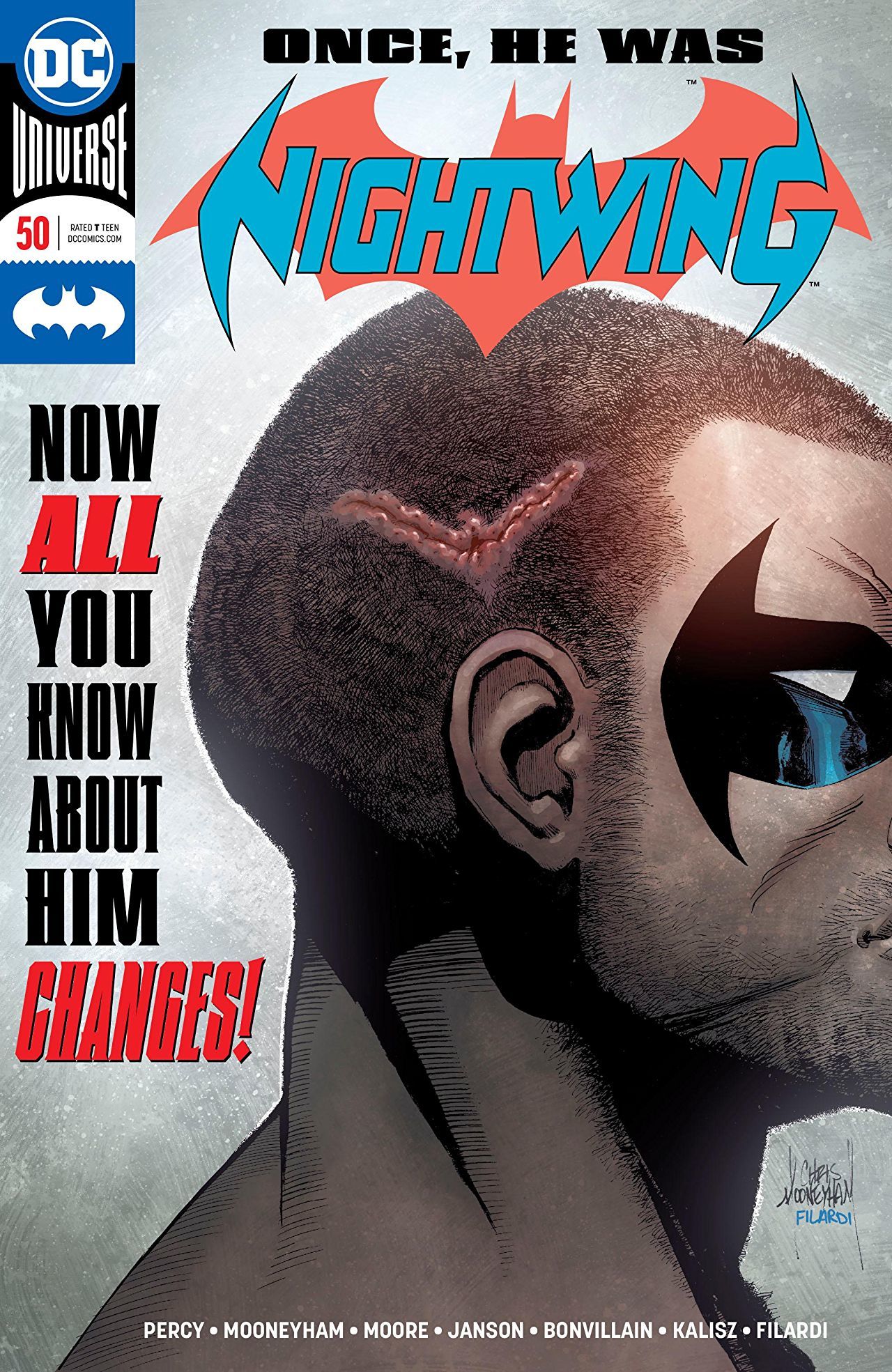
While Speedy’s addiction was socially relevant for its time (and probably still is), one can view “Ric’s” struggle with a similar socially relevant concern- identity. “Ric” wants to choose who he is, who he feels like he is, not who Bruce, Barabara (Gordon) or Damian tell him he is. I don’t know that this has really been played up, or caught on as a theme, but it’s the kind of thing that could keep “Ric” Grayson here to stay and make Dick just a part of his past he doesn’t look back upon.
Superman- Truth, Justice and Making Your Family a Target
This is coming apparently whether we like it or not. And don’t bother to point out that this idea failed a few years ago. Nothing like rehashing bad ideas, right? I mean, eventually they’ll stick? (DiDio’s been trying to get rid of Dick Grayson for years!) In Superman #18 which will be released December 11, 2019, the Man of Steel is revealing his secret identity of Clark Kent to the world.
Now, just of the top of my head this seems like a completely asinine thing for Superman to do. It’s the one thing you DON”T do as a super-hero. Most obviously, it puts a huge target on Lois. Everyone already knows Lois and Clark are married. Lois and Clark are both internationally known newspaper reporters. And writer, Brian Michael Bendis, already compromised Superman and Lois’s relationship back in Action Comics #1004. For those following along, Bendis has been pointing the story line in this direction since he took over the Superbooks, and not too cleverly either. If you didn’t see it coming, you weren’t reading these comics.
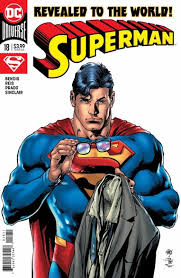
Where does this leave Lois? In constant fear of attack? Living at the Fortress of Solitude? This would certainly make it difficult for her to do her job. This revelation will also cast a shadow on Clark Kent’s credibility as a reporter. The storyline is called, “Truth” and this truth will be a double-edged sword. Superman will be doing this to be honest with the people of the world, but at the same time he will be opening up a can of worms which will certainly cause some to call him a fake, liar or charlatan.
What’s really going on here, though? Much like “Ric” Grayson’s struggle with identity, this storyline seems to really be about addressing the idea of truth in the real world, or at least having Superman address a real world issue (like Green Arrow, Speedy and heroin) that is a concern for many people today- fake news and honesty in politicians.
Honesty in politics has always been a problem, but in the past five or ten years it’s gone to a whole different level. The development of social media has provided an outlet where anything can be said and be perceived as true, no matter how ridiculous. As Superman sees these things in the world around him, it makes sense that he questions his own secrets, and how keeping them affects his perception by the world. In the current storylines his carelessness has given rise to rumors of Superman and Lois having an affair behind Clark’s back. How does the world view this in the continuity of the DC Universe? The only way Superman can see a way out is to let the world know, he’s not a dirt bag is to prove he’s also really Lois’s husband, Clark Kent!
I feel Bendis has written himself into a corner, with only one way out. However, what if addressing truth in this manner is what lends relevance to Superman for a contemporary audience, especially a younger audience that is concerned with fake news and political honesty? Clark Kent knowingly winking at the reader through the fourth wall is not going to resonate with readers in today’s climate. Superman’s simple, straightforward heroism is not so simple in today’s world. That’s the lesson that’s been learned in the past 50 years. Just like Speedy, everything’s not sunshine and unicorns, there’s a dirty underside to things. Superman doesn’t reflect that, but it’s what people think- he’s just too good to be true. And when he reveals himself, people will see they were right, he’s not.
Some didn’t think Superman and Lois’s marriage would last in the main DC Universe continuity. And it almost didn’t when “The New 52” relaunched the entire publishing line back in 2011. Despite Grant Morrison’s involvement, Superman was botched terribly. The biggest request? Bring back the marriage!! And they did. 2016’s “Rebirth” publishing initiative saw the return of the Super-couple to the main DC Universe. Despite sales being strong and receiving high critical praise, Bendis was allowed to shove his way into the Man of Steel’s life in Spring of 2018. Change has been afoot since. The only question is, does this reveal fail like the previous identity reveal, or has Bendis tapped into the Zeitgeist and made a lasting change in Superman’s character.
History’s Mysteries
It can be hard to pinpoint what makes a change in character catch on. With Speedy, it just seems like the time was right for two great creators to catch some lightning and make a lasting change. They injected some realism that they probably saw around them and turned it into a comic. One can’t tell what the next “thing” will be that takes hold and becomes an iconic element to a beloved comic book character. Unfortunately, it’s always easier to look backwards.
Maybe the Russians faked those pictures of Lois and Superman kissing, I don’t know.